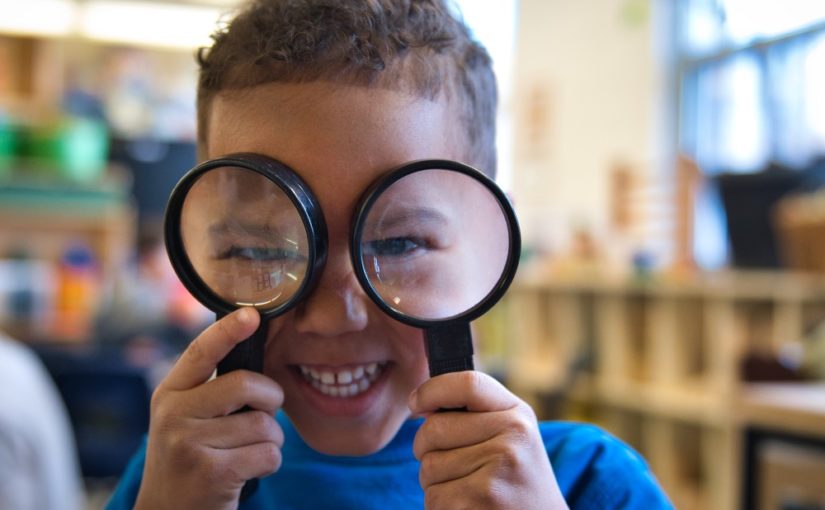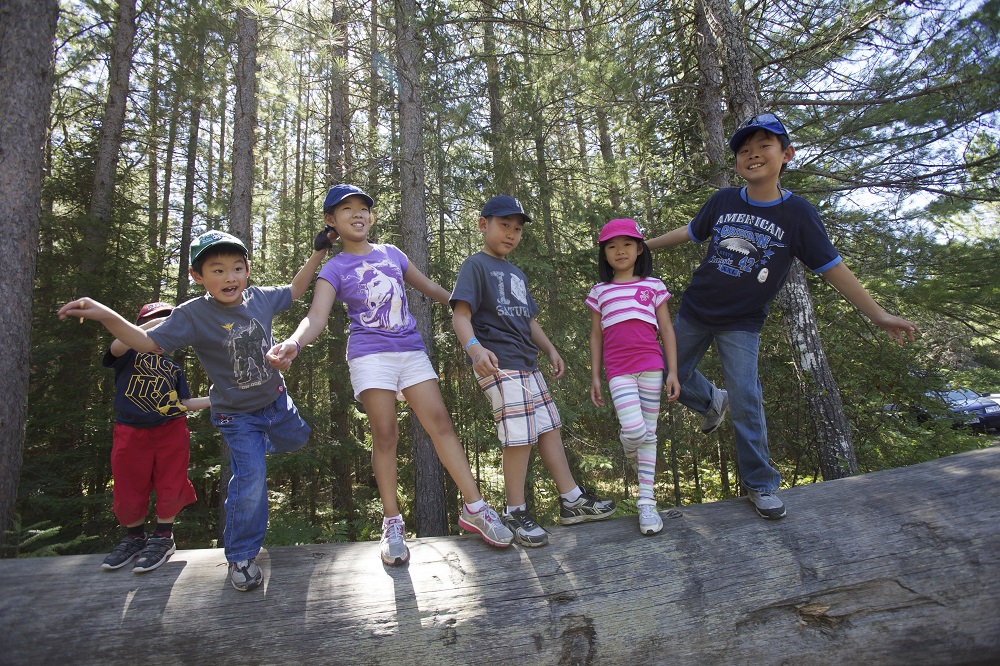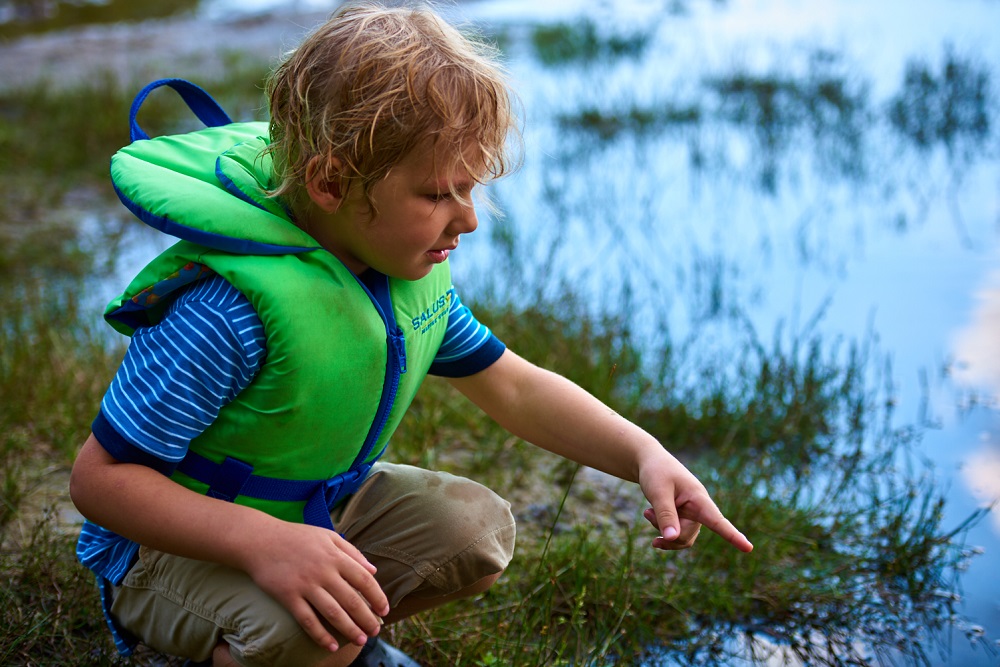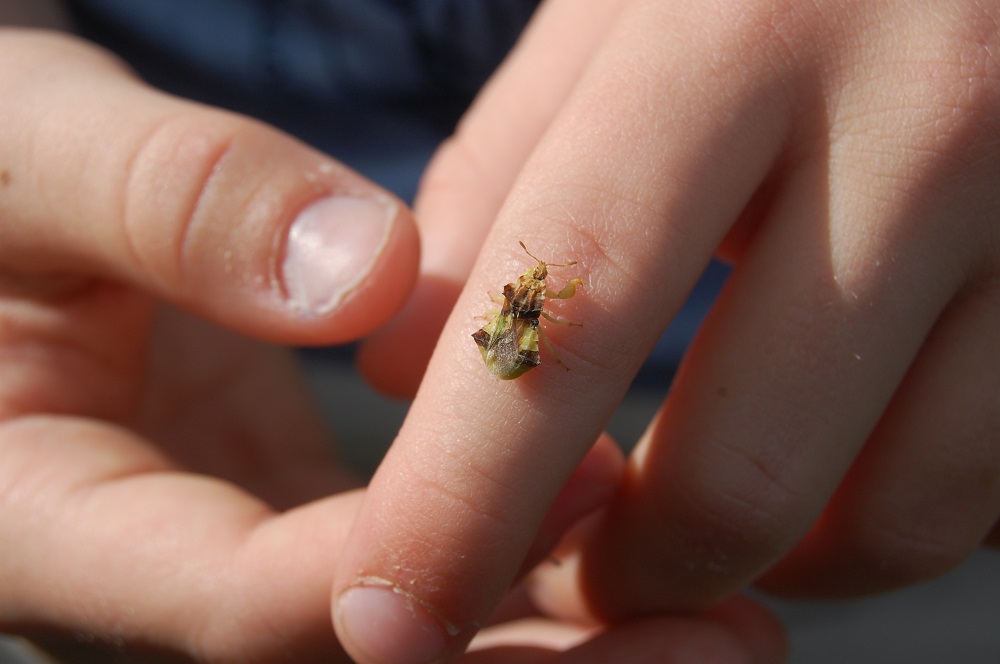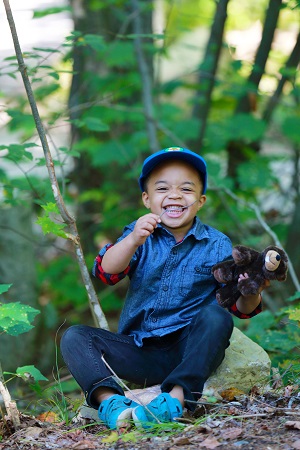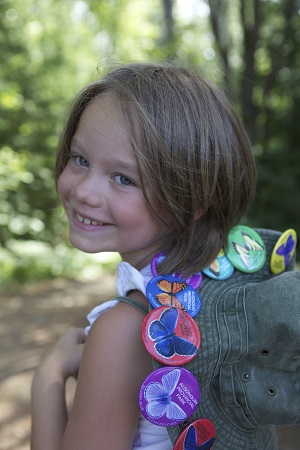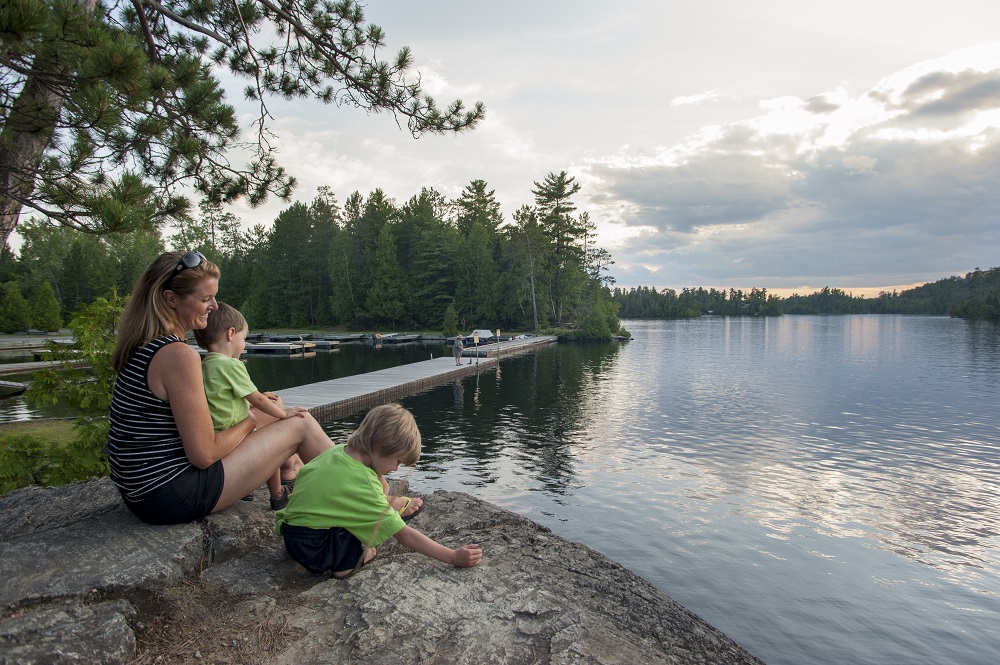In today’s post, Discovery Leader Carlin Thompson from Sandbanks Provincial Park shares her top tips for nature journaling with kids.
We did it, parents! We made it through another winter.
The struggle of tackling young children into layered outerwear and the scavenger hunts for matching mittens now seem like a distant memory. What sweet relief.
But before the unbridled joy of shucking the outerwear gives way to sunscreen-application-induced carpal tunnel and the din of summer boredom, let’s capitalize on our children’s excitement to be outside.
Get up and go!
Spending time outdoors is essential to every child’s development, health, and well-being.
A wide body of research supports the physical and mental benefits of nature and show that kids who spend regular time in nature are happier and healthier. Now is the perfect time to help fuel your child’s adventurous nature and desire to be outside.
Exploration and discovery are exciting for little explorers, but developing strong observation skills will enhance future exploration and ensure lasting excitement.
Take a good look
Observation is the action or process of carefully watching something.
To observe involves all of your senses: sight, hearing, touch, smell, and taste. In essence, it’s gathering information about the world around you; the more enhanced your child’s observation skills are, the more they will be able to explore the world around them.
Children with keen observation skills collect information and form questions. It is the basis of scientific inquiry.
We want to prepare our children to notice the beauty in the everyday, as well as the unexpected things that might stimulate their curiosity and pull them deeper into discovery.
However, it’s genuinely difficult in our busy electronic world to pay sustained attention and it’s important to engage children in activities designed to sharpen their competence in observation.
Put pen to paper
Nature journaling is a great activity to incorporate into your child’s routine to develop their observation skills.
Get outdoors with your kids a few times a week, enjoy nature’s health benefits, and encourage kids to look a little closer at nature. By recording all of the interesting things they see, smell, hear, feel and wonder about you can gently develop the lifelong habit of nature observation.
Throughout history, scientists, explorers, naturalists, and curious adventurers have kept some form of written, and often also illustrated, record of their observations, experience, or discoveries.
At one time, the pen, pencil, or brush was the only way to communicate what was seen on their adventures. Why not be a modern-day explorer and carry on the tradition?
Getting started
As a mom in the age of social media, I admit to being swept up in the desire to create the perfect “Pinterest-worthy” costume, or cake, or party, or… the list goes on and on.
Although Pinterest is the source of many aspirational and inspirational nature journals, for both children and adults, a word of caution: when beginning, simple is best!
Like most of the best things in life, nature journaling is not complicated and it’s practically free. Just a small journal, a pencil, and a spirit of adventure will get you started.
Decide where you’re going, and once there, start observing. It’s as simple as answering the question, “What’s going on outside?”
While the heart of nature journaling is not drawing skills, the very act of drawing something encourages the observer to do that kind of aware looking that is necessary to forge meaningful connections. Therefore, your child’s nature journal should contain both words and pictures.
Advice from the trenches
Start simple and add supplies later:
-
- coloured pencils
- water colours
- magnifiers
- measuring tape
- reference guides
I have found three key things have led to my children’s’ success with nature journaling:
1. Establishing a routine
Whenever teaching our children a new skill or practice, routine is important in establishing good habits. I’ve found that using our journals on a regular basis (i.e., 2-3 times a week) has helped entrench good behaviours.
Simply starting each journal entry in the same way sets the tone for the observations that will follow. I have kept it really simple with my seven- and five-year-old by having them start each entry with the date and the weather.
Subsequently, we are building up stamina in recording our observations.
To begin, we established that each observational sketch should take 2-4 minutes and should be labelled. As they become more experienced they are encouraged to add more detail. I have found my oldest naturally tended to want to do more.
Other ideas:
- what’s the season
- time of day
- weather
- components of the habitat you’re in
Routine can also be established by having children choose a special spot they return to regularly to record observations.
2. Hunting treasure
It’s important to keep your first attempts at nature journaling very specific.
Until your kids get into a rhythm of drawing from their own discoveries, this will provide some much-needed structure to your nature excursions. By making your first excursions task-orientated, they will take on a treasure hunt feel.
Soon, all new discoveries will feel like treasures!
Examples:
- three different leaves
- two different birds
- how many things are living on a tree
- two different mushrooms
- interesting cloud shapes
- two colourful living things
- natural patterns
- what’s making noise
Remember: foraging for any plant or fungal species is prohibited in provincial parks.
3. Exploring nature with your children
Never underestimate the impact of your example.
By exploring with your children and cultivating a spirit of adventure, you set the scene for success. Share your own observation with your kids, even consider journal along with them.
Conversely, be receptive and aware of your child’s enthusiasm about their own observation. Let your kids feel as though their findings are interesting (even if it’s the third shiny rock they’ve shown you that day). By sharing in the thrill of the discovery you can encourage your child’s further exploration.
Nature is everywhere!
Ontario Parks is home to some of the most inspiring and beautiful landscapes in the country, but nature is everywhere.
We may think it necessary to travel “to nature,” but you really only need to go as far as your own backyard. In fact, you could live in a high rise in the middle of the city and still experience nature.
Look and listen, stop and observe, make it a habit!
There is so much to study, even in the smallest of spaces. Little eyes, focused on little things, can often open up a wide world of adventure.
